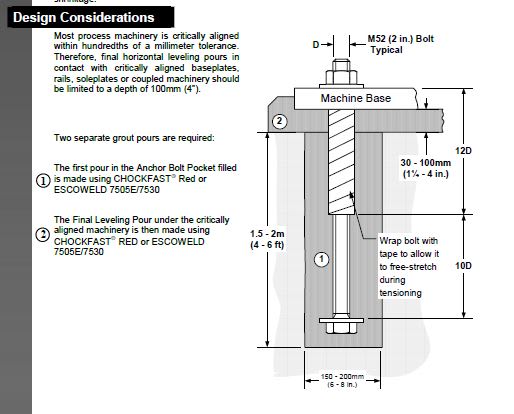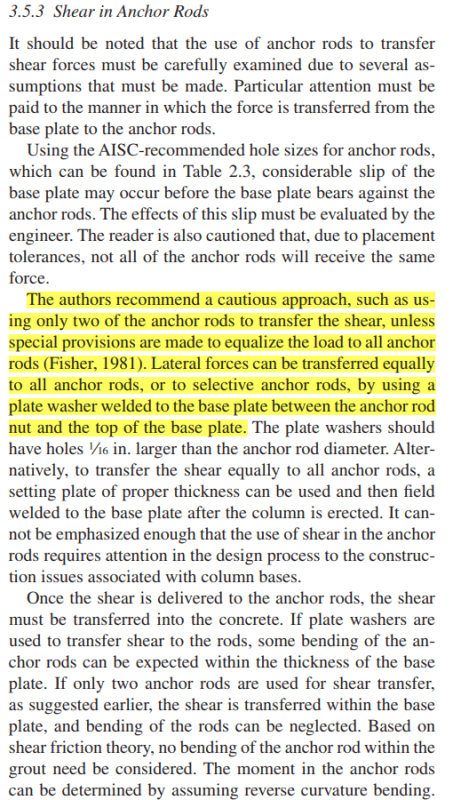canwesteng
Structural
- May 12, 2014
- 1,700
Has anyone ever heard of this? Instead of welding a plate washer, just filling the hole with epoxy grout and then the plate washer sits on the oversize as it would anyway to transmit tension.
Follow along with the video below to see how to install our site as a web app on your home screen.
Note: This feature may not be available in some browsers.

Isn't that why we ensure the bolts are tight? You still have compression between the base plate and the bearing surface even during uplife due to bolt tension. Designing for transfer via friction is certainly workable in many cases.canwesteng said:Any column under uplift and shear has no friction... which covers any light framed steel structure with tension only bracing. I don't think at ULS you can necessarily accommodate the 1/2" of deflection at the base plate in a braced frame, likely all the load ends up being lumped at another column and loading those bolts to failure before this takes up the slack. Not saying this is true in every situation, and I'll do as you described often, anytime I feel the holes need not be especially oversized.
'We' here, and also I do it ever with oversized baseplate holes. This is especially true on light framed steel structures. I'm pretty sure this is the advocated approach by ASI our local equivalent of AISC.**canwesteng said:I'll do as you described often, anytime I feel the holes need not be especially oversized.


